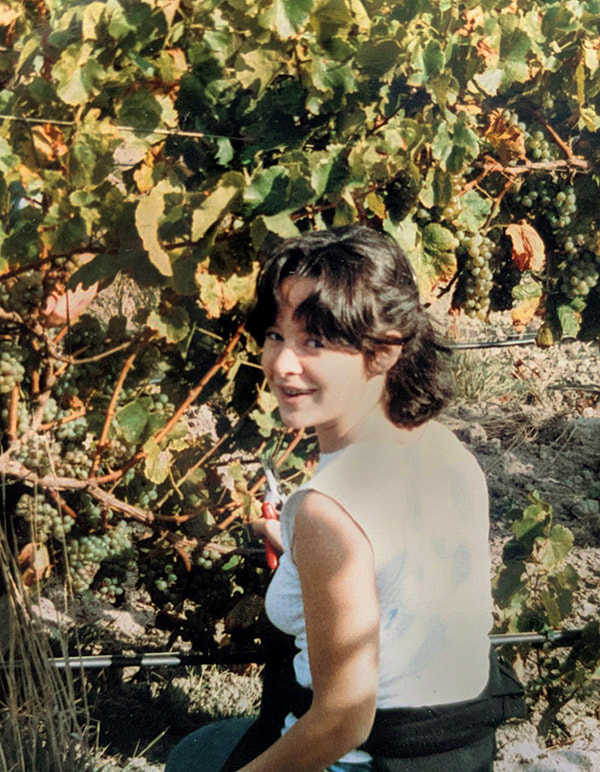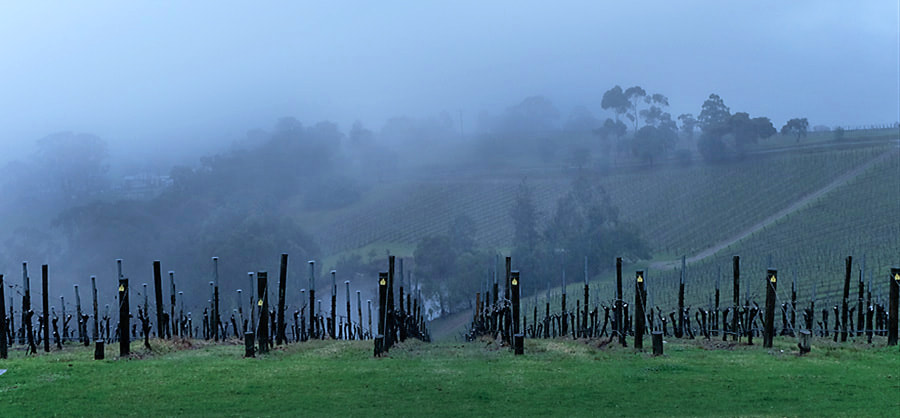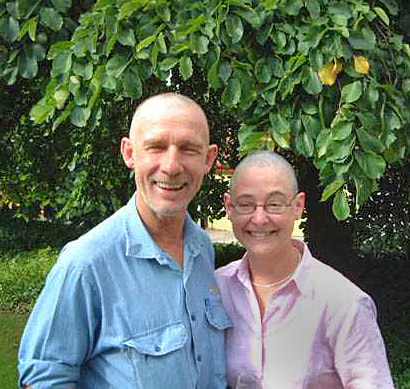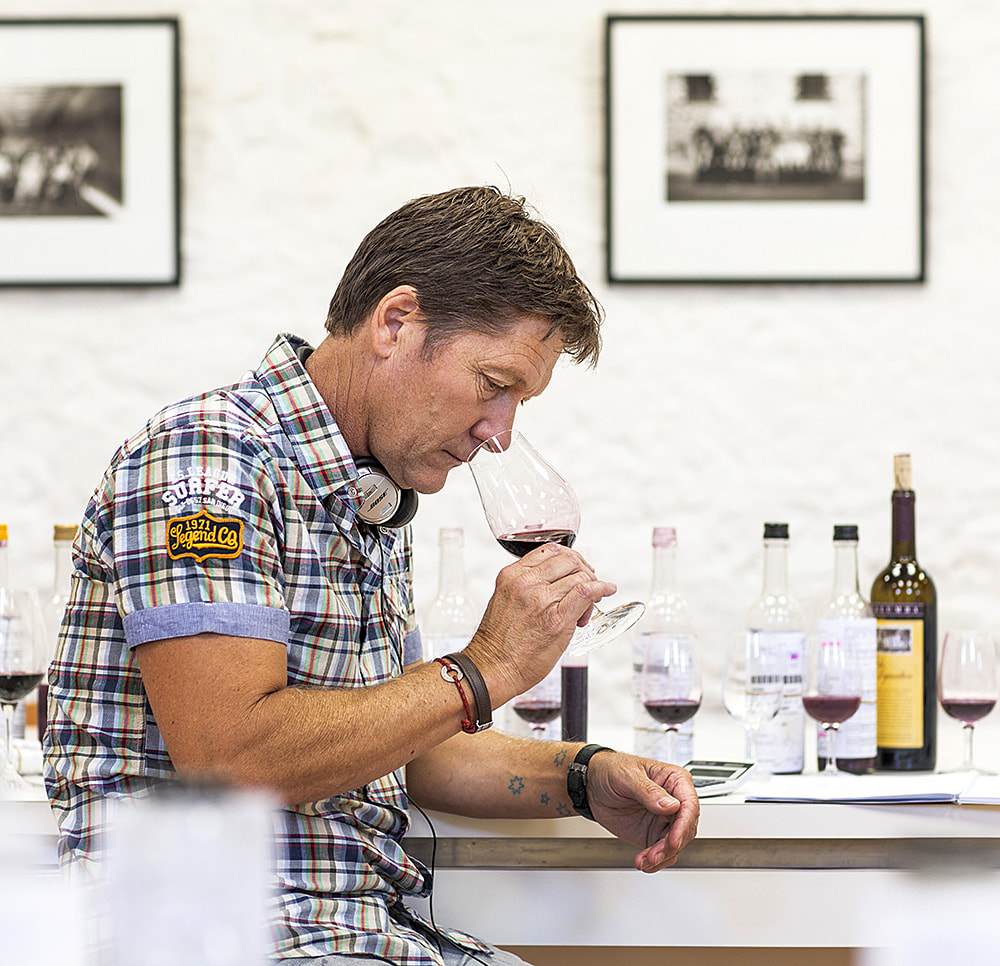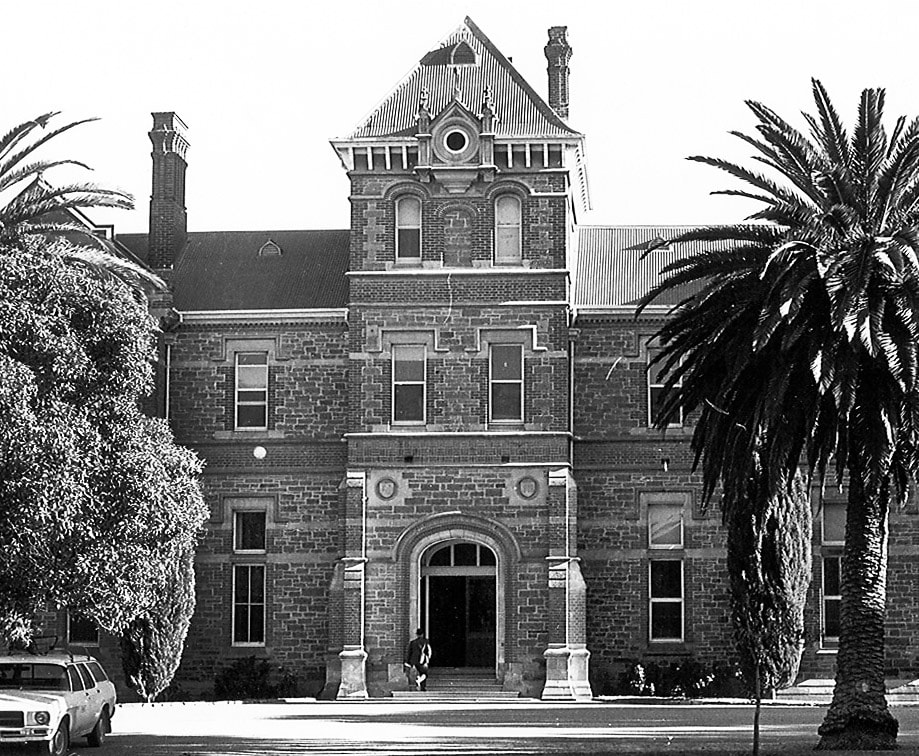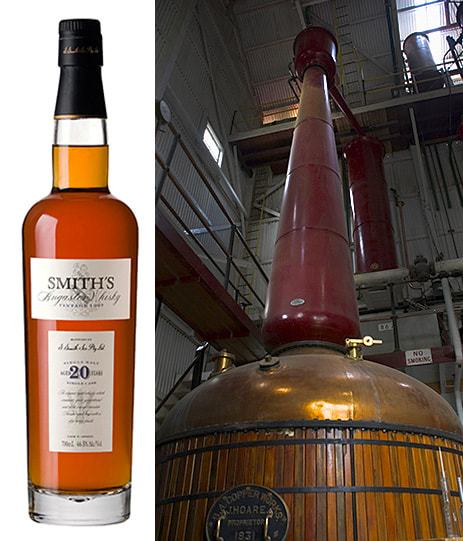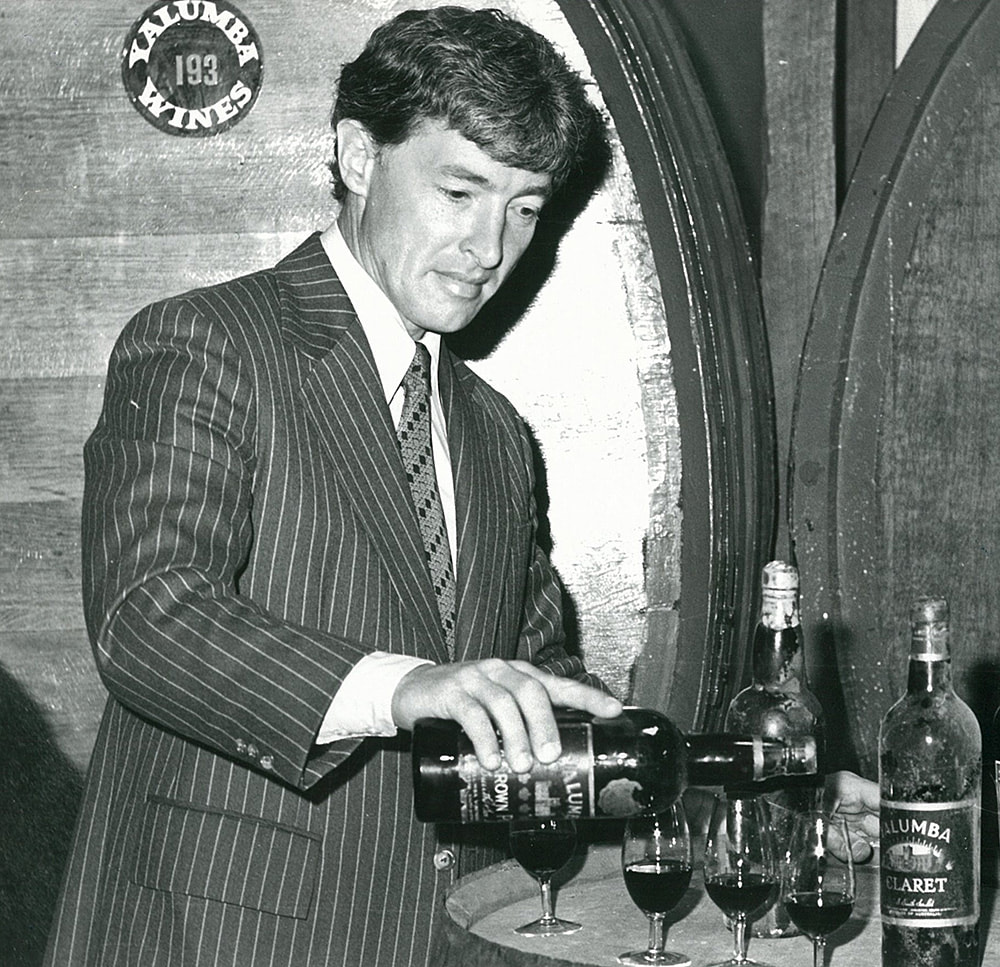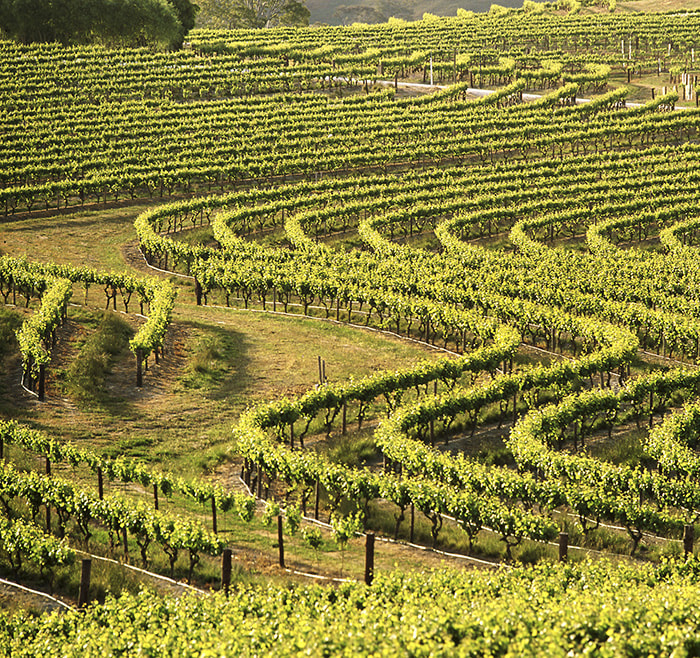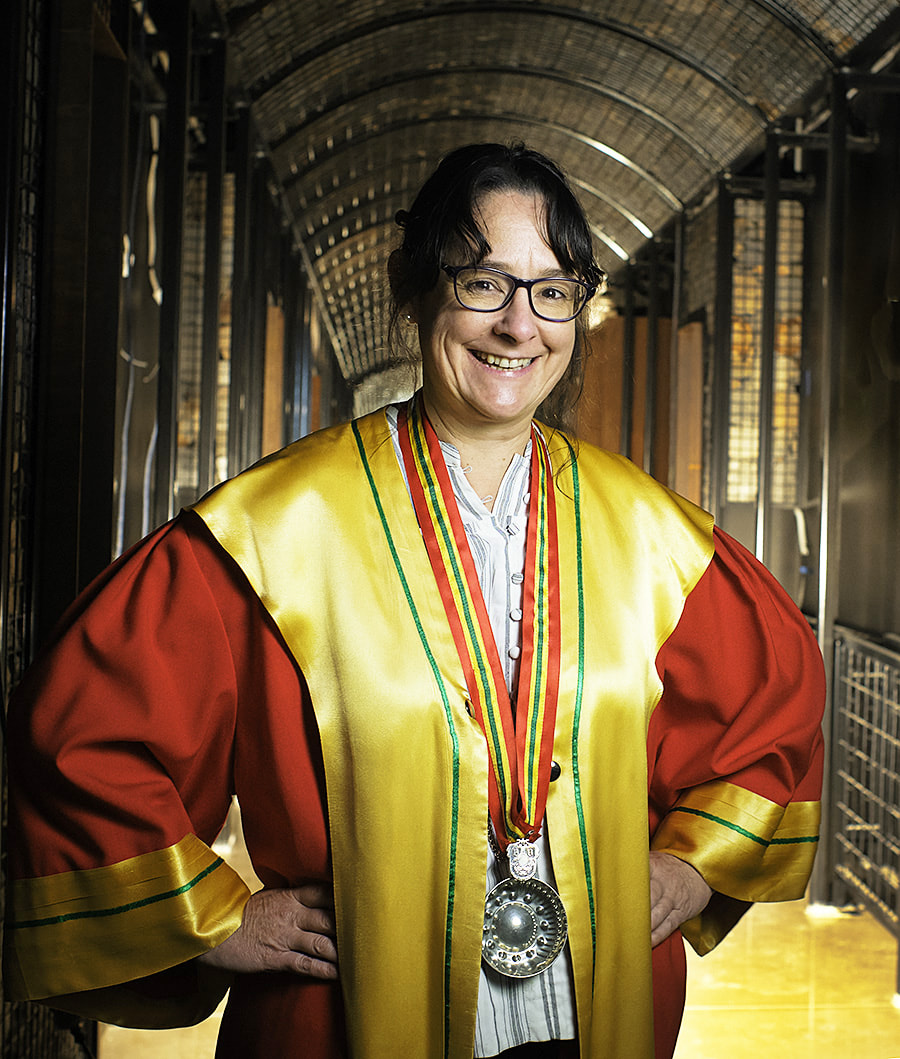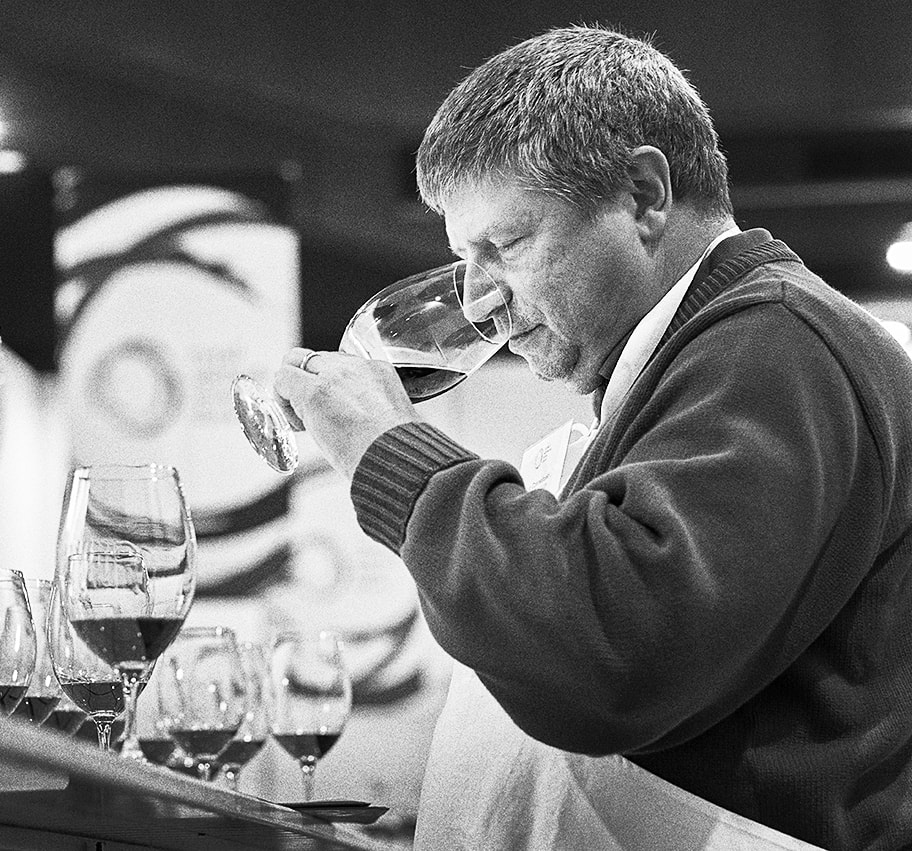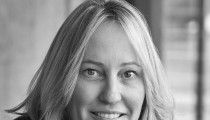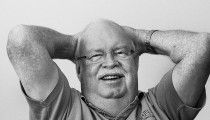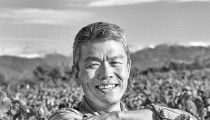Langton has recently launched it’s seventh Classification of Australian Wine.…
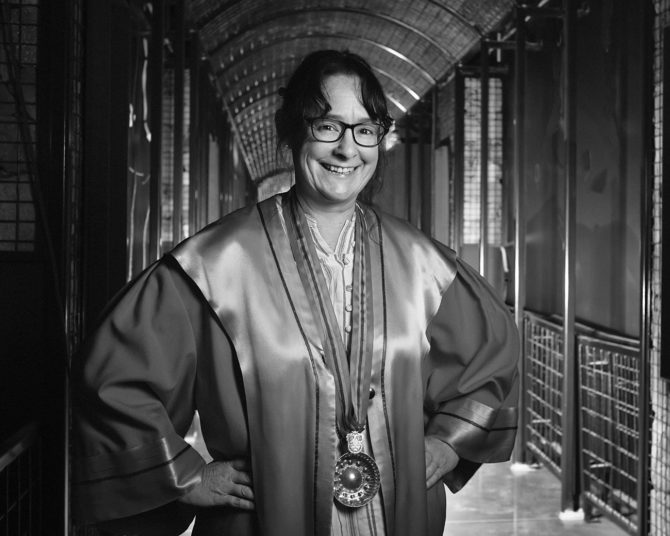
Louisa Rose : Yalumba’s Chief Winemaker
When introducing Louisa Rose at the recent Royal Adelaide Wine Show Awards Lunch Greg Follett Chair RA&HS Wine Committee and Winemaker at Lake Breeze Wines said,
“Louisa was a pleasure to work along side of ….a real professional”
Louisa is a very busy girl, as well as being the Chair of judges at the Adelaide Wine Show, she is Chair of the board at the Australian Wine Research Institute, Grand Master of the Barons of the Barossa and Yalumba’s Chief Winemaker.
In her spare time she helps her partner Warren on their 350 hectare Eden Valley farm where they run sheep and cattle, grow their own veggies and generally ‘potter about’.
The Royal Adelaide Wine Show has always been one of the most progressive in Australia. This year 32 judges judged about 2,500 wines over three and a half days.
My personal favourite category each year is the ‘Wine of Provenance’, awarded this year to Peter Lehmann Wines for the Wigan Riesling, vintages 2014, 2006 and 2004. Amongst the trophy wines, my pick was the Margaret River Xanadu Wines Cabernet Sauvignon 2017 for best Cabernet in show.
Although Louisa spent a lot of time in the family vineyard in the Yarra Valley, she never returned there.
On finishing studies at Roseworthy in 1993, Brian Walsh offered her a job as an assistant winemaker at Yalumba : She’s been there ever since.
She was recently elected as the Grand Master of the Barons of the Barossa, the first time in it’s 45 year history it will be steered by a woman. As Michelle ORielly wrote in the Barossa Herald at the time
If you ask newly inducted Grand Master Louisa Rose her views on guiding the Barons of Barossa Grand Council, she shared how during her 10 years as the only female Baron to sit on the council, she hadn’t given it much thought. “Women have always worked alongside the men in vineyards, worked in wineries, so it only seems natural,” she said.
And in true Barossa spirit she pay homage to the work of pioneering women in wine such as Margaret Lehmann, Helen Burge and Prue Henschke.
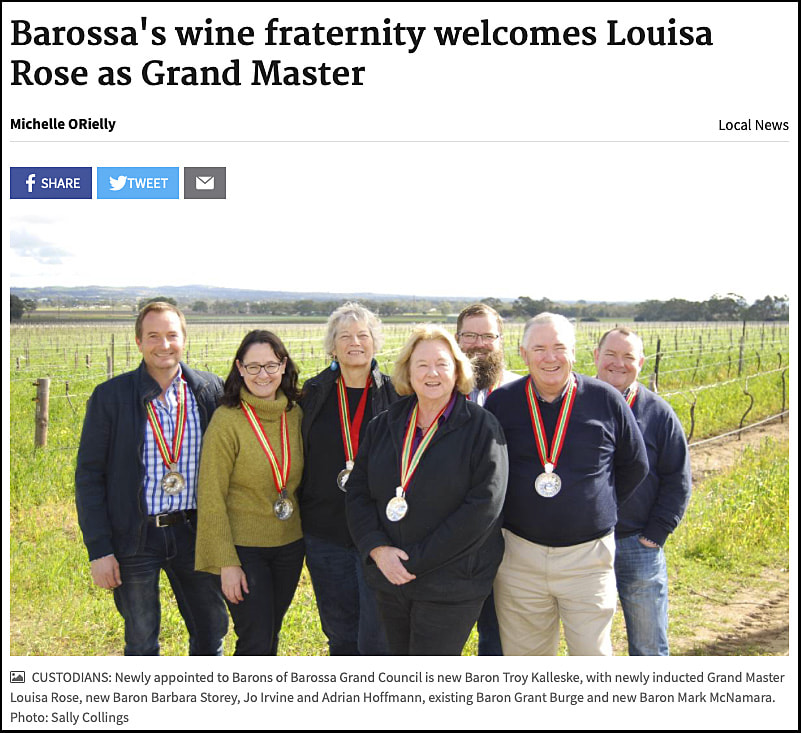
The Barossa Herald’s story on Louisa being appointed as the new Grand Master : Photo Sally Gollings©Barossa Herald.
Your early life: Family vineyard in the Yarra ?
I grew up in Melbourne.
In the mid-1970s, my parents bought 20 acres of farming land in the Yarra Valley.
My step-father, Neil came from a farming background, he had always been interested in wine, and thought planting a vineyard in the Yarra Valley would be great.
At that time there were only a few of the vineyards and wineries that we know today in the region, the Yarra was mostly cows and slightly rundown towns – most people drove straight through on the way to the snow.
The first varieties we planted, on the advice of the Victorian Bureau of Agriculture, were Golden Chasselas, Sylvaner and Gewurztraminer. Pinot, Chardonnay, and some Bordeaux reds followed soon after.
Much later on, after I had come to SA they planted Shiraz which became very popular after a Yarra Shiraz won the Jimmy Watson.
James Halliday set up Coldstream Hills in the early 80’s and for many vintages James bought our grapes.
The Coldstream Hills 1988 Rising Vineyard Pinot Noir was particularly well awarded in the shows.
One of my recollections from the late 80’s was James coming with his hired taxi truck to pick up the crates of hand-picked grapes.
Studies: Bachelor of Science, then Winemaking.
I was only 17 when I finished school, I loved working on the farm, the viticulture, and working in the vineyard; I also loved science at school and I thought that they could go together in winemaking.
While I knew I wanted to study winemaking, I first completed a science degree, majoring in physics. At school I’d say to my girlfriends,
“I want to be a winemaker” – but no one outside of the industry really knew what a winemaker was in the mid 80’s, it wasn’t a degree listed in the book of tertiary courses we were given.
I didn’t really know what a winemaker was either to be honest and I didn’t really think I would get a job as one. So my ‘plan’ was to do a science degree and then move to South Australia and Roseworthy to study winemaking.
I thought I would probably end up teaching or back in a university researching.
I graduated from Roseworthy, which was then a campus of Adelaide University, in 1993.
Yalumba ?
When I was studying at Roseworthy I rented a room with a friend of the family on a nearby farm.
In the last year one of the subjects was to ‘get yourself a vintage job, learn about wine and write a report on it’. I didn’t really want to lose that room, and I thought I would probably never come back to the Barossa so it would be good experience.
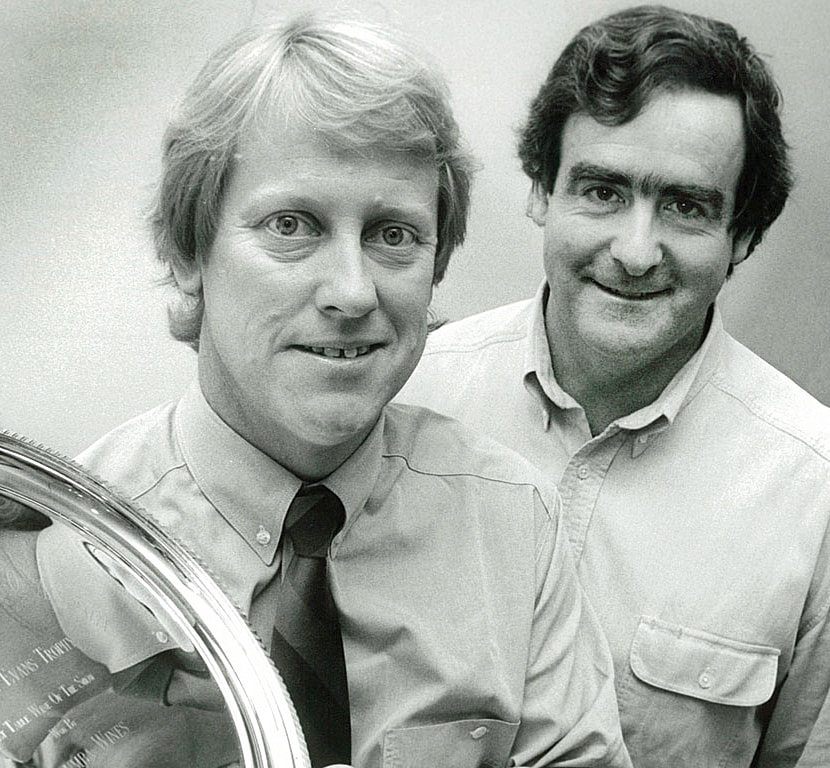
Robert Hill Smith now the Proprietor / Chairman of Australia’s oldest family owned winery Yalumba, and the then Chief Winemaker Brian Walsh with the ‘Len Evans’ trophy at the National Wine show in 1993 : the year Louisa started full time at Yalumba.
I didn’t know the Barossa at all, so I got out the Yellow Pages phone book and wrote to all of the wineries listed under Barossa. Yalumba was one of the few that replied.
I got a phone call from Andrew Murphy who said “come in for a chat.” And that was it.
That was vintage ’92 and at the end of vintage after I had worked in the cellar, they asked,
“Would you like to come back for next vintage,” which I did, as the night shift technical person.
This was 1993 and Brian Walsh was the Chief winemaker.
One day near the end of a 12 hour shift he found me in the cellar and said, “Can you come see me when you finish your shift?”
I did and after we had a bit of a chat he offered me a job as assistant winemaker, helping Geoff Linton making the sparkling wines – including Yalumba D and Angas Brut.
I’ve been there ever since.
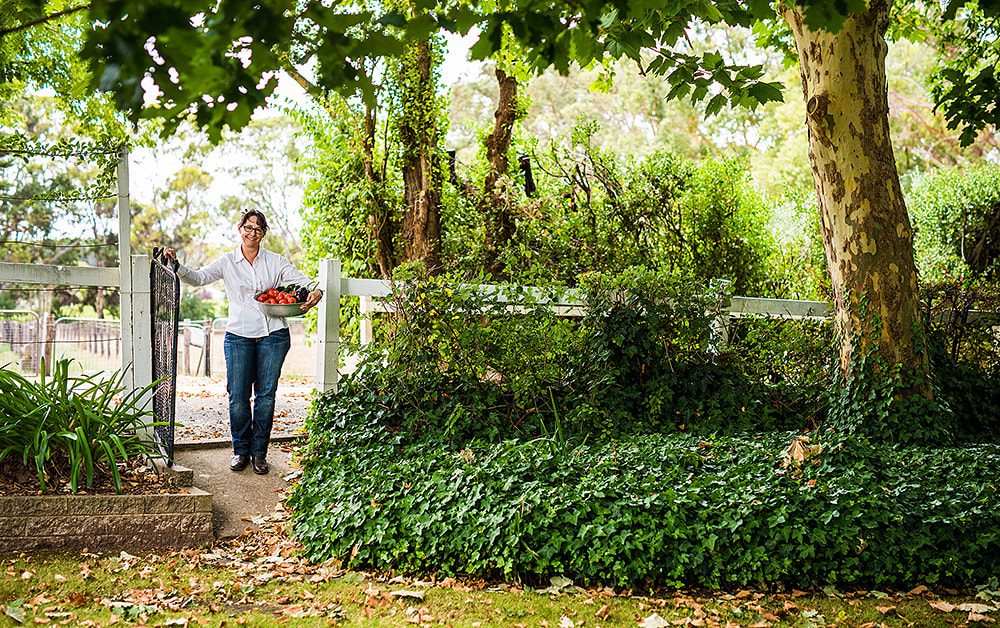
Louisa with some of her home grown veggies : Photo © Sven Kovac.
It’s been a great journey for me at Yalumba. Starting in the early ‘90s and being involved as the whole industry around the world, and particularly in Australia has grown.
Opportunities have come along for me here and I’ve never needed to think about going somewhere else.
In my first vintage in ’92, I fell in love with Warren, one of the Cellar Supervisors.
I also fell in love with the Eden Valley where Warren lived.
Between us we have about 350 hectares up there, run sheep and cattle, grow our own veggies and generally ‘potter about’.
We’ve done a lot of remnant vegetation protection and revegetation of our land and planted thousands of trees over the years and, yeah, it’s a great life.
Chief Winemaker ?
One things about I really enjoy is that end-to-end view of Yalumba and the wine industry.
I’m able to be involved in or at least see and appreciate everything from vineyard design and development, through winemaking to marketing and the final customer.
It’s a great view from agriculture to a luxury product.
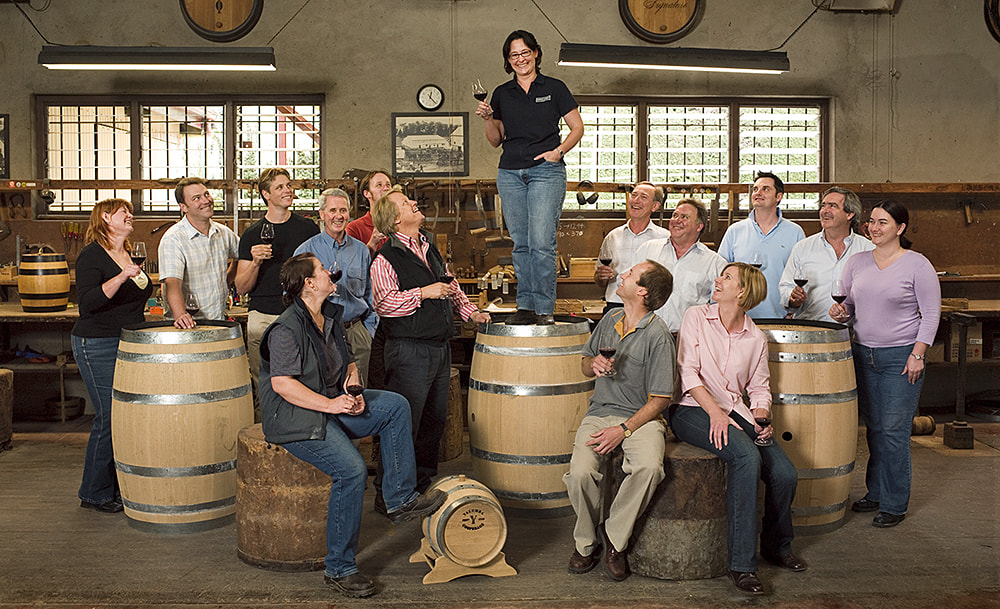
The Yalumba vintage photo in 2007. The year Louisa was appointed Chief Winemaker : Photo © Milton Wordley.
The best part, of course, is the winemaking, literally turning the grapes to wine.
We have a great team of people here that I work with to do that. Most of our winemaking team have been together more than 10 years, and some of us for more than 20.
We don’t always agree on things, but that’s okay.
Experience and knowledge of vineyards is key to making consistent and great wines.
Part of my role is to look at the sales forecasts for the coming years, and match how much, ideally, we would like to be selling, with our grape resource so we can make the right volume of each wine.
We don’t start with a clean sheet of paper every year so if you take ‘The Signature’ that KG (Kevin Glastonbury) makes, for example, most of the same vineyards go into that every year and we work with the vineyards and growers to optimise this.
Classification Tasting, at the end of vintage, is an audit process where we taste every component of every wine, making sure that each wine that we have made is in the right allocation at that point in time.
The wines will, of course, continue to evolve over time as they mature in the cellar, and so the blending process can happen over months, sometimes years before being finalised and the wines bottled.
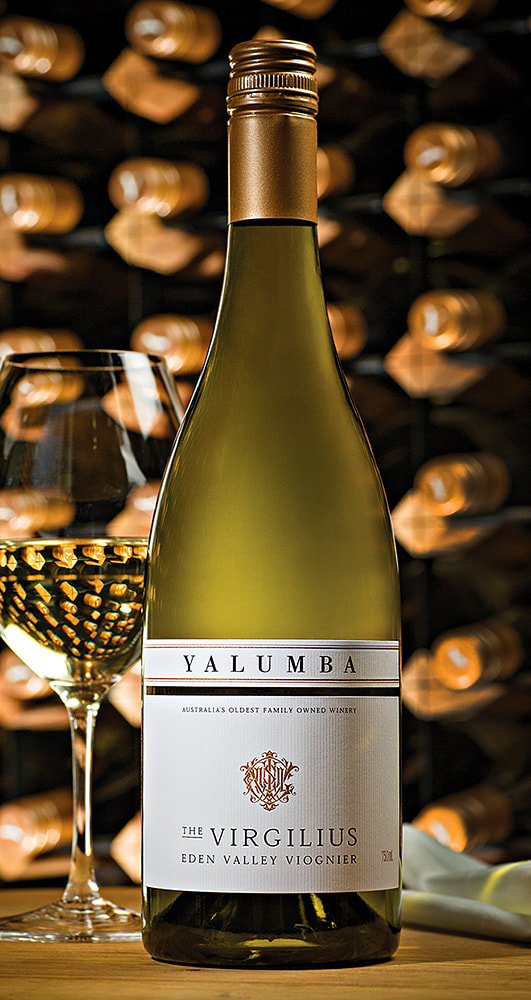
Louisa is well known for the developmental work with Viognier, and the creation of ‘The Virgilius’ Viognier – Yalumba’s pre-eminent white wine. Widely regarded as a leader within the industry.
What am I most proud of ? Hard to know really.
I think it would be the work that we have done in the last decades as viticulturists and winemakers, working in our vineyards and with our growers to increase biodiversity, vineyard health and sustainability.
Ever think of going home to run your own winery ?
No, but a small part of me feels a bit nostalgic about it.
I’ve loved working for the Hill-Smith Family and Yalumba, it has let me focus on the bits that I really enjoy and that I think I do well, as opposed to the bits that I don’t do so well.
I enjoy being a part of bigger team. I can’t really imagine doing the whole thing myself.
Viognier : ‘The Virgilius’, the back label ?
Peter Wall, who was Yalumba’s Production Director started Yalumba’s journey with Viognier.
Peter loved travelling through Europe, exploring food, culture and wine.
After one of his trips in the late 70’s he came back and suggested we plant Viognier.
At the time we think there were about 11 hectares only of the variety in the world, all in Condrieu, in the northern Rhone Valley, and that was the only place it was left in the world, it was almost extinct.
When Peter got back from that trip he found that there were a few vines at Nuriootpa Viti research station that had been imported in 1968.
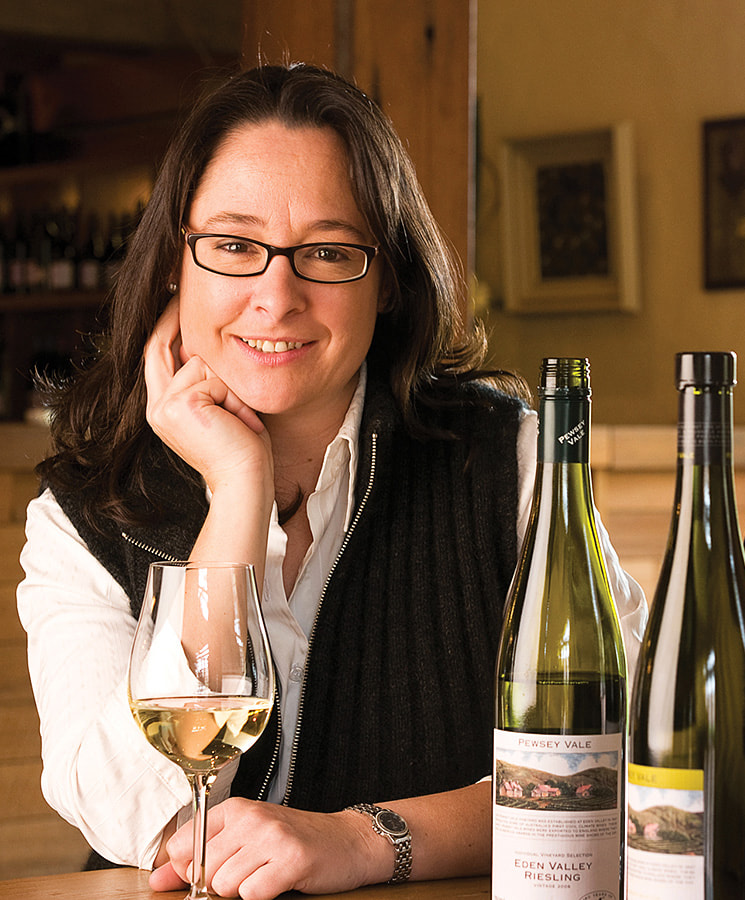
Louisa with her favorite ‘Pewsey Vale’ reisling : Photo © Don Brice
The Yalumba Nursery took cuttings and grew enough vines to plant a small plot on one of our grower’s vineyards, the Vaughan vineyard, just out the back of the winery.
That block is still the backbone of The Virgilius.
Since then it’s been planted all around the Angaston winery and also in the higher country of Eden Valley.
We also imported some new clones, or selections, from the Rhone in the late 90’s.
Favourite varieties, special wines ?
I probably drink more Riesling than any other variety.
It is an ‘any occasion’ style of wine.
One of the things that I loved about Roseworthy was the sensory classes where the world of wine was opened up to me.
I remember early in the first year, maybe even the first tasting we had, saying to the chap next to me,
“I don’t like sweet wines.”
I still remember saying that with great clarity and then, at the first sweet wine tasting that we did, being absolutely blown away by how fantastic they were.
People often say to me,
“What’s your desert island wine,” and I think it would be awful just to have only one wine to drink.
In theory you could have a different wine every day.
If you think about how big the world of wine is, even just the world of Australian wine, you should never need to drink the same wine more than once.
Another memory at Roseworthy was a couple of classes we had on distillation, Stan Obst from Tarac showed us some spirits.
My family weren’t spirit drinkers so I’d never experienced good whisky or cognac and I still remember the first taste and how amazing they were.
Laphroaig was one of the whiskys.
And it’s still one as my favourites.
Yalumba make a Whisky ?
Ever since that first taste of Laphroaig I’ve been fascinated by whisky.
We make whisky, the malt comes from our friends at Coopers, we ferment, distil and age it.
It’s hard to come by, because we’ve only ever had tiny releases of it and the waiting list is much longer.
Later this year we’re hoping to release a slightly larger volume, from the 2011 distillation. At the moment we fire up the still every three years.
The whisky distilling was something else that Peter Wall drove.
We did our first batch in 1997 before he retired.
David Zimmerman was still here then, he’d looked after our fortified wines for decades, and still remembered how to run the still which hadn’t been used since 1983.
When David retired, Kevin and I have taken it on, Kevin’s been doing the most of the whisky while I have been making a few wine spirits such as V De Vie from Viognier and last year a Riesling Gin.
Mentors ?
My mum, Elizabeth.
One of my best supporters but also a critic. She has multiple degrees and qualifications including a PhD.
She taught me by example that I could do anything that I wanted to and be anything I wanted to be.
I wouldn’t be me without her unconditional love and belief in me or her advice and help along the way.
Brian Walsh of course. You don’t work for Brian, you work with him. Brian has a way of bringing everyone with him.
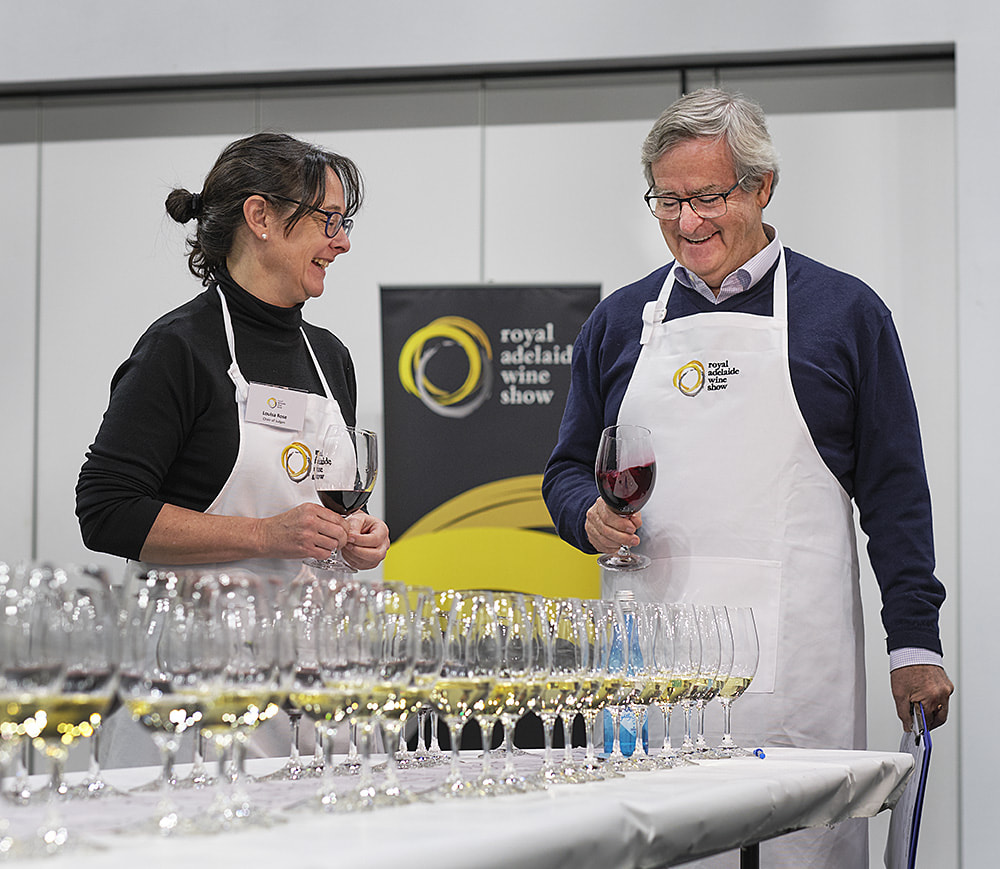
Louisa and one of her main influences Brian Walsh ,at this years Royal Adelaide Wine Show. Brian was a judge of the ‘Wine of Provenance’ award : Photo © Milton Wordley.
I wish I could inspire people the way he does.
I can’t remember Brian ever telling me to do something, you would have a conversation with Brian and you would come out knowing what you needed to do or what you could do, or what you could aspire to do, without him ever telling you.
He is a great communicator and a great thinker.
Peter Wall. It’s really only in recent years that I have realised just what an influence on my career he was.
Peter would come to talk to me about a scientific principal or idea, and through most of the conversation I would be doing my best to make an appropriate comment or two, usually not having any idea of what he was saying at the time, but determined to find out.
Peter also helped me with my love of history, particularly wine history.
Many times we would email each other on weekends while working on projects delving into the history of Pewsey Vale, or early grape importations.
There was yet another side of Peter.
Pam Dunsford summed him up perfectly when she said to me that he was one of the early feminists in the industry.
Chair of the board at the Australian Wine Research Institute ?
Nearly 10 years ago I joined the board of the AWRI, and I’ve been the Chair for the last six.
Like so many of Australia’s winemakers, Yalumba has been involved in research with the scientists at the AWRI for many decades.
So much of what we know and just take for granted in day to day winemaking has come out of the AWRI research over its 60 years.
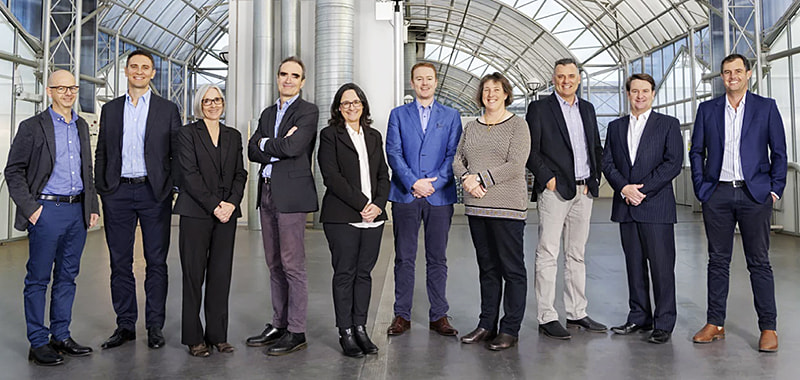
Louisa with the 2018 AWRI board. Photo courtesy of the AWRI.
The AWRI has amazing people, amazing scientists, with a real focus of getting answers and advances for the industry.
The AWRI is the wine industry’s own R&D organisation.
The Board is made up of industry elected members and special qualifications directors, and we come from different sized companies and enterprises, from different states and different sectors.
Barossa Barons, The Barossa Cellar ?
The Barons of Barossa is an incorporated, not-for-profit organisation, our charter is to proudly and enthusiastically support Barossa wine, viticulture, gastronomy, heritage and the Arts.
We have a Board, known as the Grand Council and the Chair of the Board is the Grand Master.
Up until the end of August, Stephen Henschke had been our Grand Master but he stepped down after 10 years and now I have been elected to that role.
In 2011, the Barons decided we’d do something that the Barossa winemakers have talked about on and off over the years…. that was to collect young wines from Barossa Wineries, and on behalf of the Barossa, cellar them and make them available at their peak as aged wines to promote the Barossa.
Barossa winemakers are very generous, and the offerings of wine started to come in.
It became very clear, very quickly that the problem we were going to have was where we were going to store it all ?
In 2014, James Wark who had recently become a Baron, came to advise us on corporate governance.
We said, “We’re thinking of buying somewhere to store the wine.”
James asked us, “If you just take a step back for a minute and think about where you would want this collection of wine to be on behalf of the Barossa, is that really the place that you would want to bring people to?”
That’s when the dream really began – we could build something that could become the heart of the Barossa grape and wine community.
We also have Stefan Ahrens on the Grand Council, and Stef thinks big. So we started looking for some land and started fundraising.
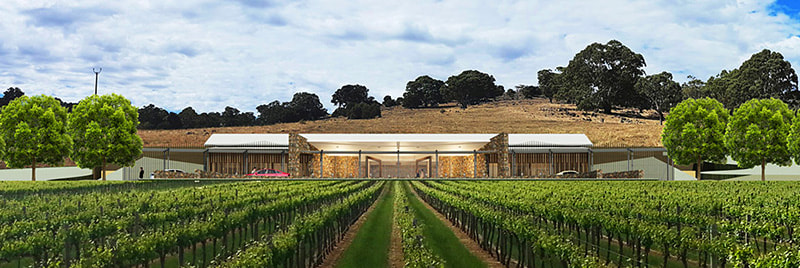
Artist impression of the finished Barossa Cellar Stockwell Rd.
We bought 2.9 hectares in 2014 and started talking to the BGWA, asking them “if we built something that had some offices and a great view, would they be interested in being there?”
There was only one tenant that could possibly be in there to make the building live, and that was the Grape and Wine Association for the Barossa.

Stefan Ahrens, Peter John, James Wark, Louisa Rose and Stephen Henschke at The Barossa Cellar : Photo © John Kruger.
Since then we have raised about $1.5 million in donations and more with in kind support, from hundreds of people and organisations and it’s just about finished.
The Barossa Cellar has a Grand Hall which is one long beautiful room with a dark stone wall.
Treasury Wines (TWE) donated stone from their Eden Valley vineyard for this wall as well as the entrance walls; it’s beautiful.
We can put one long table with 100 people for a meal, or judge the Barossa wine show in it.
We can divide it into three meeting or tasting rooms.
And then there is The Vault.
Dug into the hill, this room will house over 3000 bottles of wine.
Peter John at AP Johns sourced some beautiful American oak for us to use as the display tops for all of the racks and it’s just going to be amazing.
The Barossa Cellar will be used for special tastings or high end wine consumer events, for trade gatherings, community meetings and events.
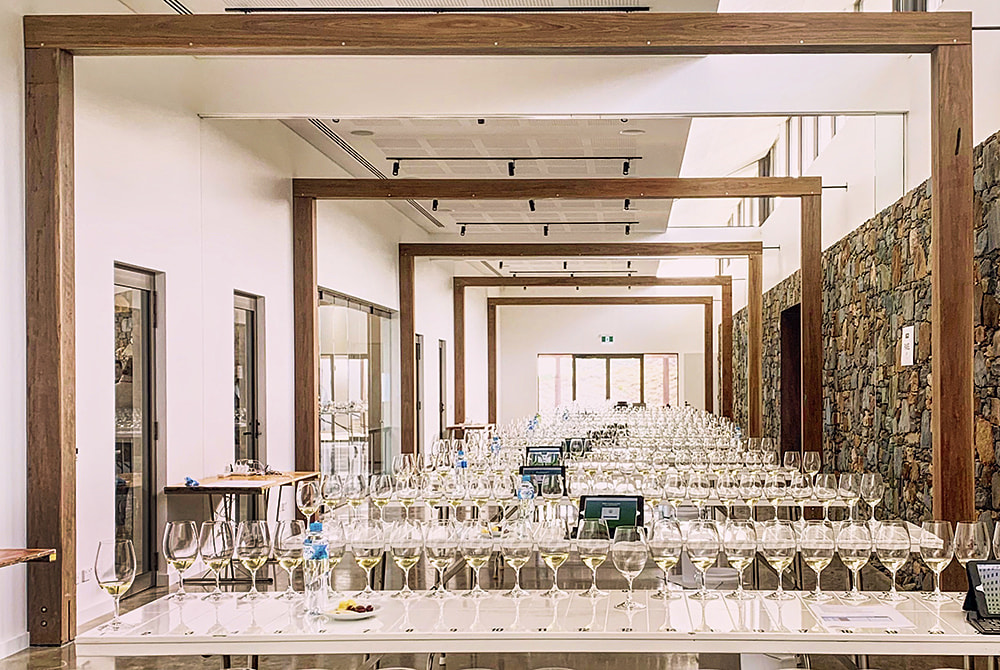
The main room in the ‘Barossa Cellar’ was made for wine judging and many other things : Photo © Bernadette Kaeding
We are still working through exactly how it will operate, but it’s been built as not only the home of the Barons, but for the people and future generations of the Barossa.
All we need to do is raise another $1.5 million to pay off the bank loan that we took out to finish the project!
So many wineries, so many growers, so many individual businesses have contributed to and understood the importance of The Barossa Cellar and what it will mean to the future generations of Barossans.
Anthony Madigan said this could only happen in the Barossa, maybe he’s right.
This years Royal Adelaide Wine Show ?
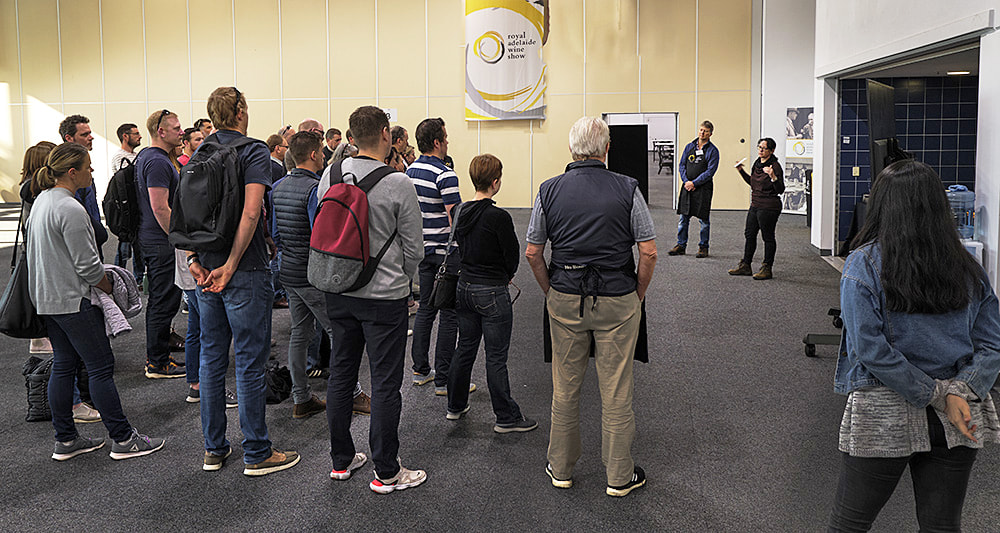
Louisa addressing the 32 judges getting ready to look at about 2500 wines in the Adelaide Wine Show : Photo © Milton Wordley.
This year was the second year I have chaired the judging panel of the Royal Adelaide Wine Show.
My first judging experience was in 1993 as an associate at Canberra in 1993.
I will never forget the sight of 150 Shiraz wines spiraling around the table waiting for me to try to differentiate one from another.
These days we have classes even bigger; at Adelaide last week, class 30, 2017 Shiraz had 260 exhibits, but instead of one panel of judges judging them all, we split it over all 6 panels.
It is a privilege being asked to chair the judging panels at a wine show. Winemakers enter their wines, and in doing so lay bare all their work and philosophy for their peers to critique and judge. The winemakers are not there to explain or defend, they trust the judges to be able to interpret what they have done and rate it.
The Royal Adelaide Wine Show has always been one of the most progressive in Australia, adopting best practice recommendations and advice, to keep the competition relevant in the changing industry landscape.
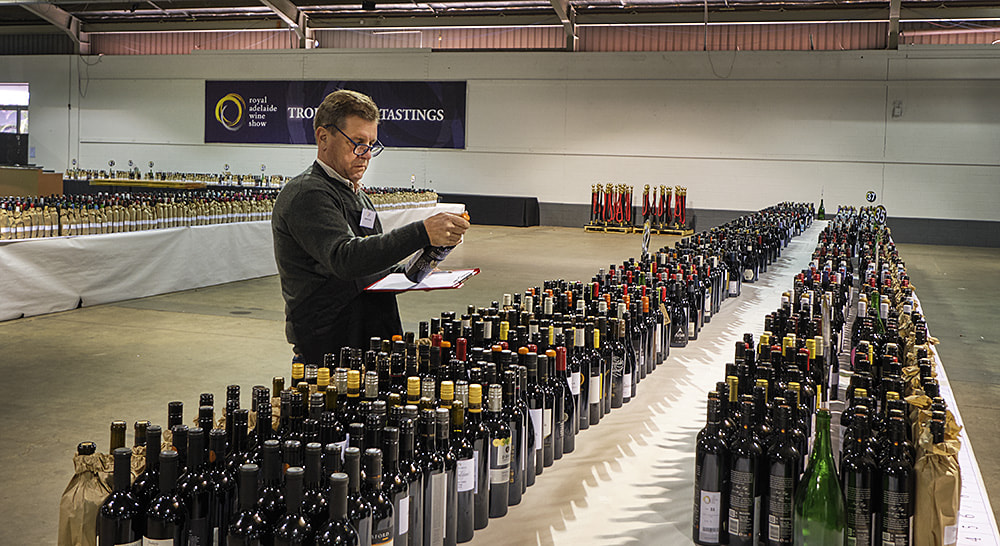
Andrew Hardy past Wine Committee Chair of South Australia’s Royal Agricultural and Horticultural Society, checks the entries in the back hall before they go out to be judges.
This year 32 judges judged about 2,500 wines over three and a half days. The introduction of electronic judging meant more time could be devoted to discussing the wines, re-tasting the top wines and teasing out the best of each class.
This year Joe Czerwinski from the USA joined us again as the international judge. Joe writes and reviews for Robert Parker’s, The Wine Advocate, and he was not only an excellent judge, but a great member of the judging group.
To be a top judge, not only must people be able to recognize quality and pull out the best wines across varieties and styles as individual judges, but they must be able to articulate why they like a certain wine, and have the humility to be part of the consensus to get the truly great wines on the day to the top.
As Chair of the judges I work with each panel when they are considering their top wines from each class.
As much as anything this is about having a fresh palate come in to taste the wines that the others have worked so hard to tease out, although listening to all the opinions and making sure all styles are being considered is important.
There is also making sure that the judges have what they need to do their job, that the timing is working, that the associate judges are getting good feedback and the results are being accurately collected and… making sure that no one misses the bus !
ENDS.
Interview, photography & production : Milton Wordley
Transcript : Libbi Curnow
Edit : Anne-Marie Shin
Website guru : Simon Perrin Version Design











